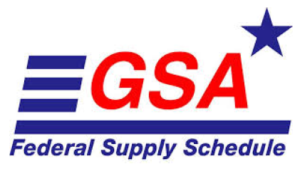In an era where cyber threats loom larger than ever, the Biden-Harris administration has ushered in a new cybersecurity paradigm, reshaping the way government contractors and businesses safeguard their digital assets and data. This shift is not just a response to increasing cyber threats but also a proactive stride towards a more secure and resilient digital infrastructure in the United States.
The urgency of these changes is underpinned by a series of high-profile cyber incidents that have highlighted vulnerabilities in both the public and private sectors. These incidents have not only threatened national security but have also had far-reaching consequences for the economy and public trust in digital systems. As a result, there is a newfound emphasis on robust cybersecurity practices, which now form a critical component of federal contracting and business operations.
Understanding these new requirements is essential for entities looking to do business with the federal government. This article aims to demystify the latest cybersecurity mandates, providing a clear pathway for compliance and highlighting the resources available to assist in this journey. Whether you’re a seasoned government contractor or a business venturing into this realm for the first time, this guide will navigate you through the complexities of the new cybersecurity landscape under the Biden-Harris administration.
Understanding the New Cybersecurity and Software Supply Chain Requirements
Cybersecurity Reforms Introduction
The heart of the Biden-Harris administration’s cybersecurity reforms lies in a comprehensive strategy to bolster the nation’s defenses against escalating cyber threats. These measures encompass enhanced security protocols, mandatory incident reporting, and reinforced compliance standards.
For a deeper understanding of the critical role cybersecurity plays in government contracting, refer to our detailed exploration in our previous article, “The Indispensable Need for Cybersecurity in Procurement.” This piece provides valuable insights into the foundational aspects of cybersecurity in the context of federal procurement and contracting.
Key Elements of the Software Supply Chain Requirements
The administration’s focus on securing the software supply chain reflects an understanding that vulnerabilities in software can have far-reaching consequences. The key elements of these new requirements include secure software development practices, thorough vetting of third-party suppliers, transparency in software components, and diligent management of security updates and patches.
The Role of NIST and CISA in Guiding Compliance
Overview of NIST
The National Institute of Standards and Technology (NIST) plays an instrumental role in setting cybersecurity standards and guidelines. NIST’s frameworks and best practices provide a structured approach for managing cybersecurity risks and form the foundation for compliance with the new mandates.
Function of CISA
The Cybersecurity and Infrastructure Security Agency (CISA) is tasked with enforcing cybersecurity policies and assisting organizations in compliance efforts. CISA’s involvement extends to incident response, resource provision, and support for enhancing cybersecurity postures.
To understand how NIST and CISA guidelines specifically impact supply chain risk management, our article “Unveiling SCRIPTS: Empowering Supply Chain Risk Management” offers valuable insights. This article explores the SCRIPTS initiative, highlighting how federal agencies are empowered to secure their supply chains and the vital role of NIST and CISA in this endeavor.
Step-by-Step Guide to Compliance
Achieving compliance with the new cybersecurity mandates is a structured process that involves assessment, planning, implementation, training, and continuous improvement. It’s about integrating robust security measures into organizational processes and staying vigilant against emerging threats.
As you strategize compliance with the new requirements, consider the insights from the article “Top 5 Government Procurements to Watch in 2024.” This piece offers a broader perspective on upcoming trends and opportunities in government procurement, including the evolving landscape of cybersecurity requirements.
Best Practices for Meeting the New Cybersecurity Standards
Best practices for meeting the new cybersecurity standards include adopting a risk-based approach, leveraging automation, and engaging in collaborative security. These practices are essential for creating a resilient and responsive cybersecurity posture.
Integrating Software Supply Chain Security into Existing Systems
Integrating software supply chain security involves meticulous vendor management, implementing secure development practices, and maintaining supply chain transparency. It’s a crucial part of ensuring comprehensive cybersecurity compliance.
Case Studies: Successful Compliance Examples
Understanding the implementation of new cybersecurity standards can be greatly enhanced by examining real-world examples. Let’s look at a couple of case studies where government contractors successfully navigated the complexities of these new requirements.
- Case Study 1: Implementing Enhanced Security Protocols
- A mid-sized IT firm specializing in government contracts swiftly adapted to the new cybersecurity requirements. They revamped their software development lifecycle to incorporate secure coding practices, conducted regular vulnerability assessments, and established a rapid incident response mechanism. Their proactive approach not only ensured compliance but also enhanced their reputation as a reliable government contractor.
- Case Study 2: Strengthening Software Supply Chain Security
- A software company supplying to federal agencies took extensive measures to secure their supply chain. They implemented a thorough vetting process for all third-party suppliers, integrated SBOMs into their software development process, and established a continuous monitoring system for their software products. This comprehensive approach allowed them to meet the stringent new requirements effectively.
Resources and Tools for Compliance
To aid in the journey towards compliance, various resources and tools are available:
- NIST and CISA Publications: As mentioned earlier, NIST and CISA offer extensive guidelines and best practices. These publications are a valuable resource for understanding and implementing the required cybersecurity measures.
- Cybersecurity Software and Tools: Leveraging the right tools is crucial. Consider using advanced cybersecurity software for threat detection and response, compliance management tools for tracking your compliance status, and secure development tools for your software supply chain.
- Professional Consultancy and Training: Engaging with cybersecurity consultants can provide tailored advice specific to your organization’s needs. Additionally, investing in regular training for your staff ensures that everyone is up-to-date with the latest cybersecurity practices and compliance requirements.
Conclusion
Navigating the new cybersecurity landscape under the Biden-Harris administration requires a clear understanding of the mandates, a structured approach to compliance, and a commitment to continuous improvement in cybersecurity practices. By following the guidelines provided by NIST and CISA, utilizing available resources, and learning from successful case studies, organizations can not only comply with these new requirements but also contribute to a more secure and resilient digital ecosystem.
The journey to compliance is ongoing and dynamic, necessitating vigilance and adaptability in the face of evolving cyber threats. Organizations that embrace these challenges and view them as opportunities to strengthen their cybersecurity posture will not only thrive in the new landscape but will also play a crucial role in safeguarding national security and public welfare.
Stay informed, stay secure, and embrace the journey towards enhanced cybersecurity. Engage with the resources available, collaborate with industry peers, and consider reaching out to cybersecurity experts for guidance. Your proactive steps today will pave the way for a more secure tomorrow.
Navigating the new cybersecurity landscape is a vital task for any organization working with the federal government. As you embark on this journey, remember that staying informed and proactive is key to your success.
We encourage you to leverage the resources available, engage in continuous learning, and collaborate with industry peers. If you find yourself needing more personalized guidance or have specific questions about achieving compliance with these new mandates, our team at [Your Company Name] is here to assist.
Contact us today to discuss how we can support your cybersecurity compliance efforts and help secure your operations in this evolving digital landscape. Our expertise in navigating federal requirements and implementing robust cybersecurity measures can be your asset in this crucial endeavor.
Take the first step towards enhanced cybersecurity and compliance. Reach out to us, and let’s make your cybersecurity journey a successful and secure one!



